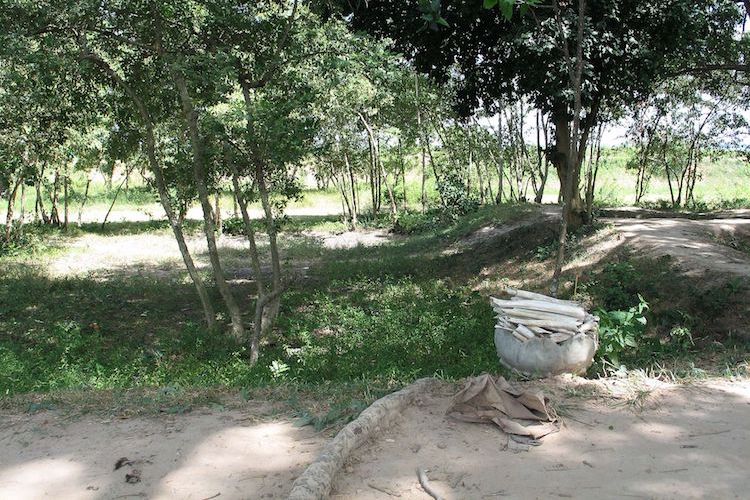
Viewpoint by Jonathan Power*
LUND, Sweden (IDN-INPS) – Finally, finally, the over-long, ten year trials of the leaders of the murderous Khmer Rouge leadership of Cambodia, are over. The two defendants, Nuon Chea and Khieu Samphan, were each given a life sentence at the end of the first trial in August 2015 for crimes against humanity. Now they have been convicted of genocide.
Of the other three that were tried, one, the ex-foreign minister, Ieng Sary died in 2013, one, Ieng Thirith, the wife of Ieng Sary, was too ill with Alzheimer’s to appear and one, Kaing Guek Eav (“Duch”), voluntarily confessed three years ago and was sent to jail for 35 years.
In the twentieth century two massacres of hundreds of thousands people compete for second place after Hitler’s extermination of the Jews, Poles, homosexuals and gypsies. One is Cambodia and the other is Rwanda. But Cambodia, where the deaths were between a million and a half and two million and the executions around 500,000, carried out by Pol Pot and his Khmer Rouge, probably wins this ugly contest.
A week after they took power in 1975 they forced as many as 2 million people living in the capital Phnom Penh to leave the city and work in the countryside. Thousands died during the evacuation. It was carried out in a hurried, ruthless and merciless way, forcing the inhabitants to leave behind all their possessions. Children got separated from their parents, pregnant women gave birth with no professional assistance. The vast majority of doctors and teachers were killed. The pogrom became known as “The Killing Fields”.
The Khmer Rouge believed this was a levelling process that would turn the country into a rural, classless society. They abolished money, free markets, normal schooling, foreign clothing styles, religious practices and traditional culture. Public schools, Buddhist pagodas, mosques, churches, universities, shops and government buildings were shut or turned into prisons, stables, re-education camps and granaries.
There was no public or private transportation, no private property and no non-revolutionary entertainment. People had to wear black costumes, work more than 12 hours a day and be married in mass ceremonies with partners chosen by the party. Showing affection to family members was forbidden. Intellectuals – often singled out because they wore glasses – were executed. If more than three people gathered together to have a conversation they could be accused of being enemies and arrested, even executed.
The Khmer Rouge ruled until 1979 when they were overthrown by the Vietnamese, their neighbours.
The Khmer Rouge then fled westward and re-established their forces in Thai territory, posing as refugees. Relief agencies, including UNICEF, were taken in and fed them, enabling them to fight another day.
The U.S., still reeling from its defeat in the hands of North Vietnam, acted on the old adage “My enemy’s enemy is my friend”. Under President Jimmy Carter the U.S. in 1979, wanting to punish Vietnam, persuaded the UN to give the Khmer Rouge Cambodia’s seat in the General Assembly. Ironically Carter, who became president in 1977, had said he was making human rights the centre piece of his foreign policy.
From 1979 to 1990 the U.S. recognised the Khmer Rouge as the only legitimate representative of Cambodia. Every Western country voted the same way as the U.S. with the exception of Sweden. The Soviet bloc voted against. (There are cases of a country going unrecognised- as with the US refusing to give diplomatic recognition to Angola in the 1980s. But Western nations wouldn’t even consider that option.)
At the same time many left wing intellectuals and activists in the West also gave them support. They saw them as a clean communist broom sweeping out the old order.
Samantha Power, formerly the U.S. ambassador to the UN, wrote in her book “A Problem From Hell” that she did not find one U.S. official who remembers reading the UN genocide Convention to see if events in Cambodia matched its requirements.
It wasn’t until June 1990 that James Baker, President George H.W. Bush’s Secretary of State, announced a change in policy. Later the Big Five on the Security Council announced that Cambodia would become a UN protectorate. After laborious negotiations the UN finally decided set up a hybrid court with both Cambodian and international judges to put the Khmer Rouge leadership on trial.
It is a good question why the Nuremberg court that tried the Nazi leadership should only take one year and this took ten years, costing $300 million. During my visit in 2014 to the court it was the defence lawyers who were dragging it out – but the judges let them.
Yet a sort of belated justice has been done. Fortunately, we now have the International Criminal Court for trying crimes against humanity committed since 2002. It is a much speedier operation, although I would say still not fast enough.
Note: For 17 years Jonathan Power was a foreign affairs columnist and commentator for the International Herald Tribune – and a member of the Independent Commission on Disarmament, chaired by the prime minister of Sweden, Olof Palme. He forwarded this and his previous Viewpoints for publication in IDN-INPS Copyright: Jonathan Power. Website www.jonathanpowerjournalist.com. [IDN-InDepthNews – 20 November 2018]
Photo: Mass grave at the Killing Field of Choeung Ek. Credit: Wikimedia Commons.
IDN is flagship agency of the International Press Syndicate.
facebook.com/IDN.GoingDeeper – twitter.com/InDepthNews











